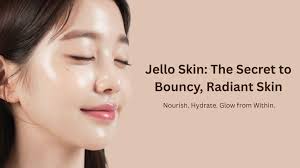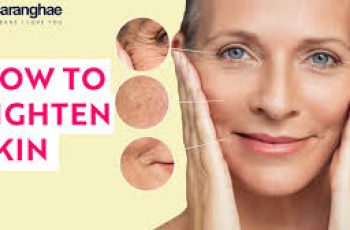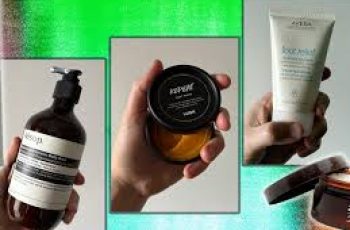
The Jello Skin beauty trend has taken social media by storm, captivating skincare lovers everywhere thanks to TikTok influencer Ava Lee, who described her skin’s incredible bounce after a facial as “jello skin.”
This catchy phrase quickly went viral, and now “jello skin” has entered the everyday vocabulary of beauty enthusiasts looking for that plump, hydrated glow everyone’s talking about.
It’s fascinating how social media can launch beauty trends overnight, influencing millions and shaping what we desire for our skin with just a few simple words or videos.
Have you noticed how once a concept grabs your attention, you start seeing it everywhere? That happened to me with jello skin, which even made me connect it to something from literature!
In Frank Herbert’s novel Dune, the desert-dwelling Fremen prize “water plump skin” as a sign of wealth and health, and I immediately thought, “That’s jello skin!” — a funny cross between fiction and modern beauty talk.
But what exactly does jello skin mean? And how can you achieve it in your own skincare routine without a pricey facial?
Jello skin is essentially a metaphor describing skin that is plump, hydrated, and bouncy, similar to the texture and resilience of gelatin, bursting with water and vitality.
To truly grasp what jello skin means, it helps to understand how your skin holds onto water and why hydration is the key to that desirable bounce and softness.
Some mistakenly believe jello skin comes from collagen, but while collagen adds strength and firmness, it’s actually water within the skin that creates that supple, jiggly effect we want.
Collagen-boosting ingredients help with aging but won’t directly give you jello skin — instead, you need to focus on ingredients that enhance your skin’s water-binding ability.
Your skin holds water in three main ways: inside cells via the Natural Moisturizing Factor (NMF), between cells with sugars called glycosaminoglycans like hyaluronic acid, and through channels called aquaporins.
All these systems need to work together effectively; otherwise, your skin may feel dry or lack that signature plumpness that defines jello skin.
Glycosaminoglycans (GAGs) are sugar molecules in the skin that attract and bind water, acting like tiny sponges to keep the skin fresh, soft, and wonderfully plump.
Besides hydration, GAGs also aid cell communication and help stimulate collagen production, both essential for youthful, healthy skin — so they’re multitaskers in your skincare arsenal.
When GAGs bind ample water, the skin gains volume, feels smoother, and looks visibly more plump — exactly what you want for that jello-like texture.
The Natural Moisturizing Factor is a group of water-loving compounds inside skin cells on the surface, including amino acids, PCA, lactates, and sugars that attract moisture to keep skin hydrated.
NMF plays a crucial role in plumping skin cells from within, which helps your skin appear firmer, tighter, and more jiggly — just like jello!
Now, how does jello skin differ from the well-known glass skin trend that’s been popular for years?
Glass skin is all about a smooth, radiant surface with a thin outer layer that reflects light to give a glowing, almost shiny appearance, often achieved with exfoliation and layering skincare.
In contrast, jello skin feels soft, firm, and hydrated without the intense shine, offering a healthy, bouncy appearance rather than a glass-like or doll-like finish.
Some people describe glass skin as “too perfect” or even artificial, especially when combined with frozen Botox expressions, while jello skin looks natural and lively.
Dermal fillers containing hyaluronic acid can even give a form of jello skin by physically adding volume and hydration beneath the surface for that plump effect.
Scientifically, jello skin relates to two terms used in physics and dermatology: G’ (elastic modulus) and G’’ (viscous modulus), which describe how skin resists deformation and recovers its shape.
G’ measures how much force the skin can take before it changes shape, while G’’ measures how well it bounces back after being deformed — together, they define skin’s elasticity and resilience.
A high ratio of G’’ to G’ means the skin is very elastic and springy, which is exactly what gives the jello skin sensation that everyone craves.
Another skincare term you might hear is “cloudless skin,” which refers to a clear, blemish-free complexion, quite different from the texture-focused jello skin concept.
To achieve both clear and hydrated skin, it’s important to find the right products suited to your unique Baumann Skin Type, which categorizes skin into 16 types for personalized care.
You can take the Baumann Skin Type quiz online to identify your skin’s specific needs and shop for products that will deliver the best results, including that coveted jello skin.
Another trending skincare technique linked to jello skin is “skin slugging,” which involves applying a thick occlusive layer, like petroleum jelly, to seal in moisture overnight for deep hydration.
Skin slugging helps lock in water and improves skin’s barrier function, leading to the plumpness and softness synonymous with jello skin, and it’s been widely discussed on beauty blogs and YouTube channels.
But you don’t have to rely on slugging or facials alone — specific skincare products with humectants like hyaluronic acid and heparan sulfate can boost your skin’s water retention at home.
These ingredients draw moisture into the skin and bind it, raising the skin’s G’ and giving that supple, hydrated texture that feels like jello to the touch.
Popular products containing these hydrating heroes include La Roche-Posay Hyalu B5 Serum, CeraVe Hydrating Hyaluronic Acid Serum, and ISDIN Hyaluronic Booster ampoules — all highly recommended.
Applying these serums followed by a barrier-repair moisturizer ensures the hydration is sealed in, maximizing the plump, jiggly effect that defines jello skin.
If you’re serious about skincare, incorporating glycosaminoglycans like hyaluronic acid in your routine is the fastest and most effective way to unlock jello skin without invasive treatments.
Remember, hydration isn’t just about applying water-based products; it’s about improving your skin’s ability to hold onto water through smart ingredient choices and consistent care.
Achieving jello skin means your skin is healthy, hydrated, elastic, and full of life — a perfect balance of softness and firmness that feels amazing and looks radiant.
So, whether you’re new to skincare or a seasoned pro, the jello skin trend offers an exciting, science-backed goal that anyone can work towards with the right knowledge and products.
In summary, jello skin is more than just a catchy phrase — it’s a beautiful, hydrated state of skin defined by excellent water retention, balanced elasticity, and a natural plumpness that glows from within.
Why not try adding some hyaluronic acid serums or skin slugging to your nightly routine and see how your skin transforms into that irresistibly bouncy, jello-like texture?
With consistent care and the right products, you’ll be bouncing back like jello in no time, just like Ava Lee’s viral skincare moment inspired millions to do the same.



